|
ELISABETH SCHWABERLE ON HANDKE AS TRANSLATOR
|
 |
|
|
|
|
|
|
|
|
|
|
|
|
|
|
|
 |

|
|
 Profile 16, Peter HandkeFreiheit des Schreibens - Ordnung der Schrift – herausgegeben von Klaus Kastberger
Erscheinungsdatum: 07.09.2009
Flexibler Einband, 352 Seiten Preis: 21.50 € (D) / 37.50 sFR (CH) / 22.10 € (A) ISBN 978-3-552-05476-9
Zsolnay TABLE OF CONTENT AND MINI-REVIEW TO COME THE BELOW TEXT AND LINKS CAN ALSO BE FOUND AT THE INDEX
PAGE TO THE HANDKE SCHOLAR BLOG
http://handke-scholar.blogspot.com/2010/05/index-page-for-handke-scholar-and-all.html

OUR AUSTRIAN MADE [!] POSTAGE DURING HIS LIFE TIME NOT QUITE YET A MARBLE STATUE!
SOMEWHAT ANNOTATED
TABLE OF CONTENTS
OF
FREIHEIT DES SCHREIBENS – ORDNUNG DER SCHRIFT
PROFILE # 16: PETER HANDKE
MAGAZIN DES OESTREICHSCHEN LITERATUR ARCHIVES
AND
OESTREISCHEN NATIONAL BIBLIOTHEK
Profile 16, Peter Handke
Freiheit des Schreibens - Ordnung der Schrift – herausgegeben von Klaus Kastberger
Erscheinungsdatum: 07.09.2009
Flexibler Einband, 352 Seiten
Preis: 21.50 € (D) / 37.50 sFR (CH) / 22.10 € (A)
ISBN 978-3-552-05476-9
Zsolnay
![]()
Profile 16, Peter Handke Freiheit des Schreibens - Ordnung der Schrift – herausgegeben von Klaus Kastberger
Erscheinungsdatum: 07.09.2009
Flexibler Einband, 352 Seiten Preis: 21.50 € (D) / 37.50 sFR (CH) / 22.10 € (A) ISBN 978-3-552-05476-9
Zsolnay
[Ausgangspunkt des Bandes ist die betonte Eigenständigkeit der Literatur von
Peter Handke. Eine Art zu schreiben, die oft quer zur veröffentlichten Meinung
steht und sich planvoll gegen äußere Vorgaben zur Wehr setzt. Legendär sind
Handkes Auftritte vor der Gruppe 47 ebenso wie seine Theaterstücke und Bücher -
von der "Publikumsbeschimpfung" über "Wunschloses Unglück" bis zur "Morawischen Nacht".
Beflügelt von frühen Erfolgen vermochte sich der Autor in einer jahrzehntelang weiterentwickelten
Schreibarbeit als autonomer Dichter zu etablieren. Auch die vieldiskutierten Aufsätze über
Jugoslawien zeigen: Aus dem alltäglichen Schreiben und den konkreten Ausformungen
der Schrift gewinnt er die dazu notwendige poetische Kraft. Ein fundierter Beitrag zur
neueren deutschen Literaturwissenschaft mit zahlreichen Faksimiles aus dem Vorlass des
Autors am Österreichischen Literaturarchiv und aus anderen Sammlungen.]
http://www.hanser-literaturverlage.de/buecher/buch.html?isbn=978-3-552-05476-9
AND HERE THE LINKS TO THE THREE ONLINE ALBUMS THAT DERIVE THEREFROM:
http://picasaweb.google.com/mikerol/SCHWAGERLEHANDKEUEBERSETZER#
http://picasaweb.google.com/mikerol/HANDKESCHOLAR?authkey=Gv1sRgCPi75pny-NaGogE#
[KARL WAGNER’S HANDKE/MUSIL]
http://picasaweb.google.com/mikerol/HAFNERHANDKETRANSLATOR#
REMEMBER IF LINKS BREAK: THERE IS A BROWSER! AND THERE IS THE HUB, THE ENTRY TO THIS HUGE UNDERTAKING:
http://handke-magazin.blogspot.com/2010/06/handke-magazine-is-over-arching-site.html
FREIHEIT [for short], a large-size, elegantly produced paperback of 350 pages, appr. 500 word per printed page, about seventy pages - p.31-72 + 157-182 - consist of documentary material from the Austrian national Handke archive and is of a documentary nature and fascinating indeed it is to see Handke’s manuscript and galley corrections and photos, drawings, etc. etc, and photos of the salt works that provide the background for his operatic novel KALI. Nearly worth the reasonable price of admission itself.
Otherwise the content, broadly speaking - LISTING OF AUTHORS AND TITLES OF ESSAYS AT THE END - addresses various works of Handke’s going back to his 1980-1987 Salzburg period to the then most recently published [2007/8] MORAWISCHE NACHT and DIE KUCKUCKE VON VELICA HOCA, and certain interesting aspects of his work, GOETHE/HANDKE, MUSIL/HANDKE… the subject of Stifter crops up frequently but no single essay addresses itself to the subject STIFTER/ HANDKE. The documentary material goes back to the KASPAR and RIDE ACROSS LAKE CONSTANCE DAYS.
Some of these essays are absolutely first rate, Hans Hoeller’s on VELICA HOCA is a standout – even though I read KUCKUCKE twice it proved an eye-opener; as are Fabjan Haffner and Elisabeth Schwaegerle’s on Handke and translation which are on line PICASSA ALBUM WEB PAGES via links at respective pages at the
http://www.handketrans.scriptmania.com/
http://picasaweb.google.com/mikerol/SCHWAGERLEHANDKEUEBERSETZER#
http://picasaweb.google.com/mikerol/HAFNERHANDKETRANSLATOR#
Georg Pichler’s on HANDKE/ GOETHE has been on the scriptmania site long prior to publication of FREIHEIT and now also Karl Wagner’s on MUSIL/ HANDKE, essaying which can be found at:
http://www.handkeprose2.scriptmania.com/index.html
http://picasaweb.google.com/mikerol/HANDKESCHOLAR?authkey=Gv1sRgCPi75pny-NaGogE#
as well as at the respective pages of the:
http://handke-scholar.blogspot.com/2010/05/index-page-for-handke-scholar-and-all.html/
and its links to their Picassa web albums.
The over-all editor Klaus Kastberger is in a position to indulge himself in his essay on KALI in bringing in my adolescent favorite, Stendhal’s ON LOVE, in connection with KALI’S love theme, before admitting that it really is of little pertinence; of which – even with a lot of kid left in me - 60 year exposure to the so materialistic American girl- and womanhood has disabused me – European women are another matter. I did find one where the notion of “ebenbuertig” which plays such significant role in KALI came into play, and what if it wasn’t someone Handke had known during his Berlin days. I wish that Kasterberger had puzzled over this ‘facing it’ as an analyst would put it, this “Sie musss sich ihm stellen” – a rather hortarory invovocation… or that he or Ms. Schwaegerle might have asked him in the interview what “was up” with that, and what and how… and so on.
Handke’s editor Raimund Fellinger on NO-MAN’S BAY, Katharina Pektor on the development on the so problematic [I find it] CHINESE DES SCHMERZENS [ACROSS it is called ridiculously in Amurrican] both provide excellent background material. Surprisingly, the volume, which has the crème de la crème of Austrian Germanistik and Handke studies as contributors [Fellinger and travel companion Thomas Deichmann, I think, are the only non-Austrians in the volume] lacks anything by Handke’s first reader/ out of house editor Peter Hamm. Perhaps he is all written out on the subject, as I am not.
I miss something on the two matters that interest me most:
A] the experience of reading Handke – how via what he does with language, no matter that he changes over the years, reading Handke constitutes a very particular experience – which, say in DEL GREDOS - except for the occasional spot of “dead skin” - conveys the writers love of writing in such a way as to put me – I don’t think it is just nutty me – into a finely agape state of mind. THE READER in NO-MAN’S-BAY and also in MORAWIAN NIGHT is one side of Handke’s artistic self – and being not just psychoanalytically half-well trained but also paying the proper deference to the ever neurological interface of our mind am planning to try to get one of my friends in that field, Professor Yokumara at the U.W. perhaps, to put an electronic cap on my brain to see how the brain changes while reading Handke! Handke as better medicine than anti-depressants – which I have never taken, and which is surprising since Handke absorbed his mother’s depression intra-uterine and is a depressive who for a considerable time during his prolonged adolescence suffered from suicidal impulses. Yet utterly self-confidente prima primadonna initially. The conqueror of fear, writing, now, conveys his love of existence. Still a primadonna though! The book lacks a biographical essay, and as is customary in the instances of these collections of essays about Handke, anything critical, he didn’t use to permit it, perhaps here neither.
B] The one rather disappointing piece is on Handke’s later plays. Since I translated all the plays up to and including WALK ABOUT THE VILLAGES, I recall wondering how that ultimate anti-boulevard boulevard play THE RIDE ACROSS LAKE CONSTANCE would actually play – I had directed the other early on or participated in rehearsals, and so had an idea of what effect they produced, and was then astounded that RIDE left me entirely addicted to the STATE OF MIND – refreshed, mind wiped clean, that RIDE produced at its American premiere in 1971 at Lincoln Center. And during its five week run would go for just a ten minute hit! Better than the best cocaine any day! HOUR has the same effect and does so without juggling words, it is just a series of images and a movement when you see it – and in fact it leaves you reborn. As far as I am concerned, Handke achieves what Brecht set out to do: a non-Aristotelian catharsis – that, too, I imagine my neurological scalp cap could ascertain – the health of the group depends on the health of the minds of its members. I am uncertain whether the 3-D spectacles in movie houses perform the same necessary trick.
The volume also contains a good, not great, interview with Handke who continues to give good interview in serious times,
or have his coy fun with folks like Andreas Mueller. However, if the book length Gamper/ Handke interview of 1986 ICH LEBE DOCH NUR VON DEN ZWISCHENRAEUMEN sets the standard for an important Handke interview the current Kastberger/ Schwaegerle - comes in as a “B.” It fails to follow up on certain most important matters that Gamper addressed or which Handke offered there of his own free will.
A] “vom biograpischen aufgerollt” – since Handke projects himself re-imagined into his text, the naturalistic question of the autobiographical...?? interesting as this is when and if you write Handke’s biography, if anything shows the irrelevance of the biographical this might….unless you decide to explore what it means to be a genius who started to practice writing …. Thomas Deichman, the editor of NOVO, and traveling companion to Yugoslavia talks about that a bit. As I put it the other day to a Handke biographer: he might be goat with three heads, what counts is how she meckert! Thus the relationship between text and biography if one wishes to approach them in that manner needs to be carefully calibrated: in SHORT LETTER LONG FAREWELL we have the buddies “German Writer” “Austrian Dramaturg” and a wife who pursues… is that pursuit a physical representation of the neglected wife Libgart Schwartz’s longing, which is perceived as a threat, a very pronounced theme, once again, in MORAWIAN NIGHT, a threat to the solitary profession as a writer? His isolation? The fine analytic notion of “over-determination” and how each of these complicated locks can be unlocked, from one vault lock to the other…
B] “autistsiche Zusstaende” I would ask him to describe what he means and how he came to that formulation. Autists have been showing up in Handke’s recent work, idiots nearly from day one!
C] A closer probing of what those “threshold” inbetween-states consist of,
or are comparable to in the case of someone as super ultra hypersensitive as Handke is.
D] Why Handke, while going to the Milosevic funeral and visiting him in jail and in general coming to the defense of the Serbians being made exclusively responsible for the disintegration and the atrocities [do you ever come on, except with me and Choussevsky, on the suggestion that economic warfare ought to be regarded as a crime on the order of war crimes?]… why Handke then did not follow the Milosevic and family request to be an expert witness for the defense; after all, he offers no explanation in DIE TABLAS DES DAMIEL for his refusal, and didn’t even write the requested letter to the tribunal!!!???
E] What he meant when he said “I am writing out of my wound – has he configured its complicated nature, at least for himself?
F} Is he meanwhile aware that the list of matters that tired him as he recounts them in Essay on Tiredness all derive from intense rage? Those perhaps still continuing three “near epileptic fits a day.”??
G] Gamper’s observation about a certain naturalistic use of linguistic material on Handke’s part.
H] Re what I hint at above with his texts and the experience of his plays being fairly unique experiences –
does he have an image of a reader and how he wishes that ideal reader to experience when he composes.
I myself prefer to think of Handke as a composer.
I] are we to believe, from
that, as a young man, he left an illegitimate child behind in Cordula/ Krk?
J] and for good measure: does he still beat up his women when they step out of line?
TABLE OF CONTENT
p. 5 MEINE FUELLFEDER [my fountain pen] an essay written for school, 1956, aged fourteen.
p. 11-30 THE KASTBERGER/ SCHWAEGERLE Interview
p.31-72 WERK MATERIAL on: Kaspar, Ride Across Lake Constance, They Are Dying Out, A Slow Homecoming, Austrian Poem, The History of the Pencil, Two Letters to Rene Char, Voyage by Dugout, Lamenting, in Tears; Del Gredos; Hanging around the Tribunal; the Milosevics Funeral Speech; a letter to the magazine FOCUS; Subday Blues; Morawian Night.
p. 73 Fabjan Hafner, on Handke as translator, on-line at the handke translation site and the handke-scholar blog via Picassa album here;
p. 87 Elisabeth Schwagerle, on Handke translator, as above accessible in the same manner via the translation site and the scholar blog.
p. 109 Katharina Pektor on Across: “How do I approach Loser’s story.” Fascinating!
p. 133 Raimund Fellinger, on the creation of NO-MAN’S BAY. Fascinating!
p. 143 Klaus Kasterberger, on KALI see my note above. Provides extraordinarily interesting background material.
p. 157-174 WERK MATERIAL on the creation of THE CHINESE OF THE WATER TORTURE [Across], NO-MAN’S BAY, KALI [great photos of the salt works which become so very present in the reading of the book].
p. 183 Thomas Deichmann TRAVELING WITH PETER HANDKE [Klaus Peymann, too, is absent in these pages, who not only did some actual traveling to Kosovo with Handke, but had all those trips prior to the premieres. Bondy, too, might have some interesting matters to say.
p. 205 Hans Hoeller’s terrific piece on KUCKUCKE OF VELICA HOCA.
p. 222 Michael Hansel HANDKE AND THE PENCIL.
P. 237 Ulrich von Buelow, the archivist of these Euro 500,000 papers!
p. 253 THE THIRD SECTION DEVOTED TO ARCHIVAL MATERIAL
on the NOTEBOOKS,
p. 281 Georg Pichler on Handke and Goethe which has been online with the scriptmania site for many years, and can also be found on the handke-scholar.blog
p.294 Karl Wagner, HANDKE/ MUSIL accessible Picassa web album
HANDKE-SCHOLAR and via the handkeprose2.scriptmania site and via its page on the handke-scholar blog. These blogs exist to encourage discussion.
p. 306 Leopold Federmair: ON THE RELATIONSHIP BETWEEN CHRONICLE AND THE EPIC in Handke’s work. Need to re-read it. Very interesting so far.
p. 325 Alexander Honold: DECIPHERING THE ECUMENICAL… need to finish reading what looks like a very obscure approach TO ME!
p. 347 Index of Authors.
============================================================= http://picasaweb.google.com/mikerol/HANDKE3ONLINE#
|
|
|
|
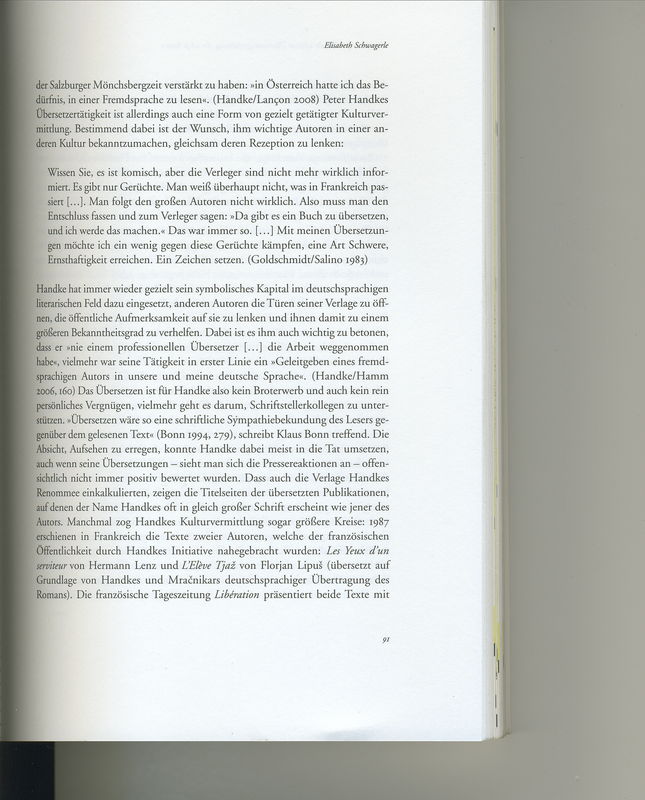
|
Screen Shot: Hyper Lander 2 Classic
This is the rescue vehicle that you pilot through the game. It has some cool features that are described on this screen of the game.
|
|
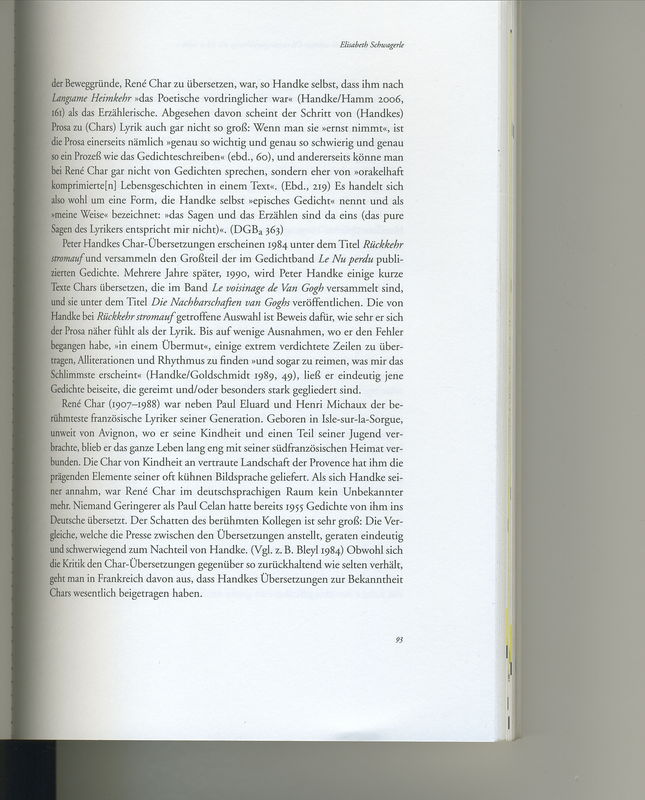 Screen Shot: Project BOB
Screen Shot: Project BOB
This is the title screen for the game.
|
|
|
|
Screen Shot: Hyper Lander 2 Classic
This game has some screens that cannot be seen unless you use game codes. This is one of them.
|
Screen Shot: Hyper Lander 2 Classic
This is a destroyed base hidden at the end of one of the tunnels. It's part of the mystery that surrounds the story behind the game.
|
|
Screen Shot: Project BOB
Time for some explosives.
|
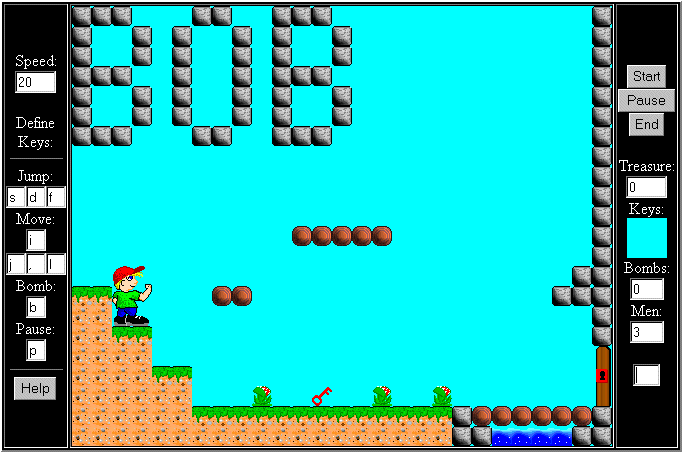
Screen Shot: Project BOB
This is the title screen and the first board in the game.
|
|
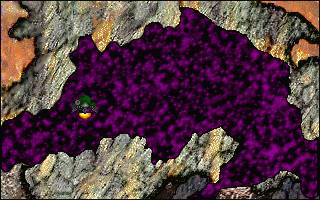
Screen Shot: Hyper Lander 2 Classic
The granite crag, one of my favorite climbs.... er, mm.... rooms.
|

Screen Shot: Hyper Lander 2 Classic
This blueish rock formation is at the very top of a huge ascension chamber which opens below it. The type of mineralization would suggest venting gases for some length of time during the geologic history of this moon ..?
|
|
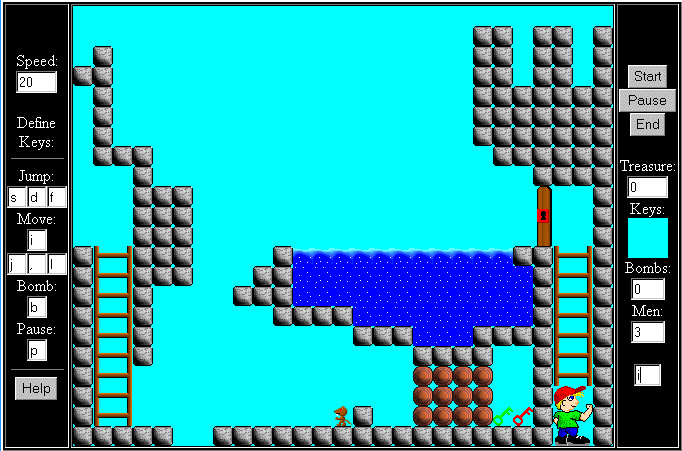
Screen Shot: Project BOB
This is the water room.
|
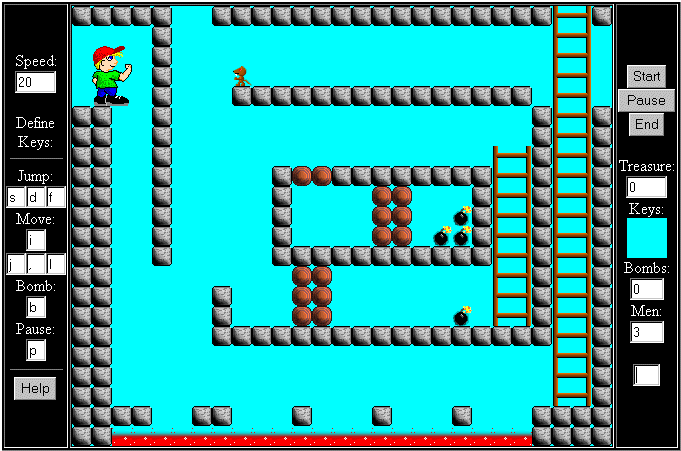
Screen Shot: Project BOB
This is the lava room, it took some effort to reach. It's really hot.
|
|

Screen Shot: Hyper Lander 2 Classic
Another example of some interesting rock formations, at one of the deepest places in the moon that this game takes place on.
|

Screen Shot: Hyper Lander 2 Classic
The first time I played it took a second to learn how to go ... how shall I say.... "up".
|
|
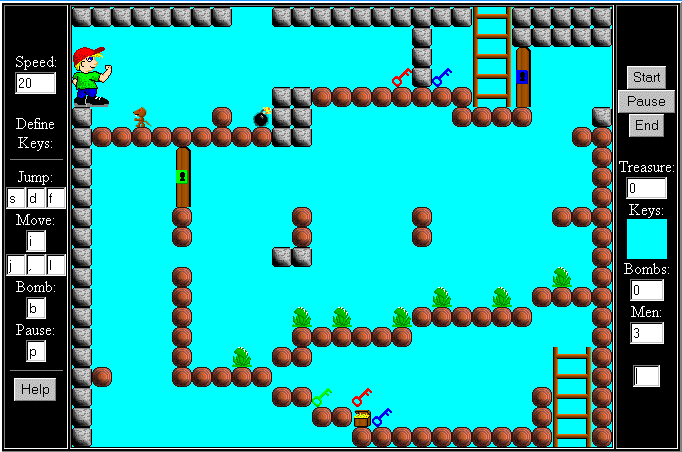
Screen Shot: Project BOB
....you dirty rat....
|
|
|
|
|
|
|
|
|
|
|
|
|
|
|
|
|
|
|
|
|
|
|
|
|
What do you think?
Please let me know by signing my guest book.
|
|